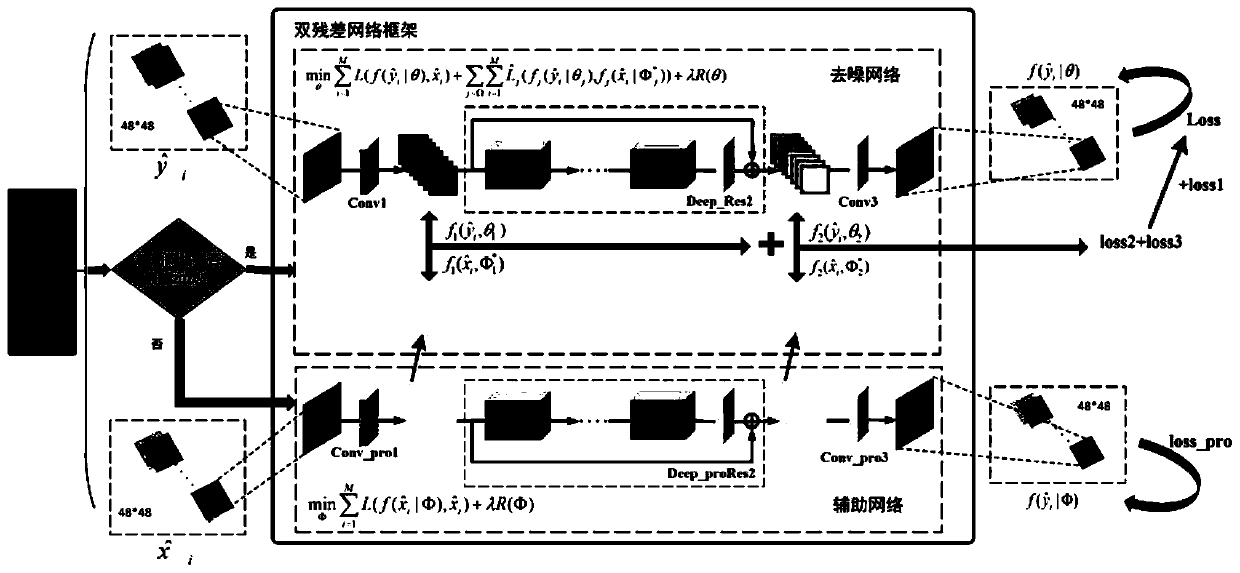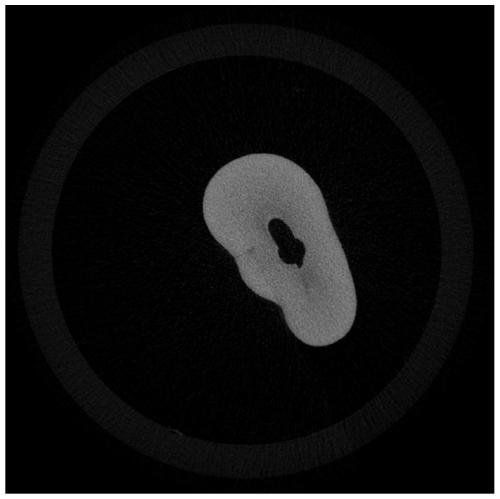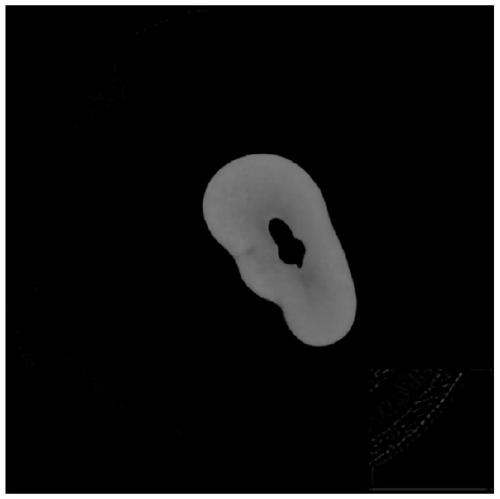Low-dose CT tooth image denoising method based on double-residual network
A low-dose, double-residual technology, applied in the field of image denoising, which can solve the problems of high noise, recovery of tiny details to be improved, and low definition.
- Summary
- Abstract
- Description
- Claims
- Application Information
AI Technical Summary
Problems solved by technology
Method used
Image
Examples
Embodiment Construction
[0041] A low-dose CT dental image denoising method based on a double residual network of the present invention is as follows: figure 1 As shown, follow the steps below:
[0042] In part 01, the grayscale image of the BSD500 data set is taken, and the preprocessing operation is performed before entering the network model. The specific steps are as follows:
[0043] Step C011: Import the grayscale images of the BSD500 dataset, which are 500 preprocessed images and 500 real images respectively. Among the 500 grayscale images, 432 are used as the training set and 68 are used as the test set. is Pre_Image, and the real image data set used for verification is recorded as Real_Image; 500 preprocessed images are respectively recorded as Pre_Image1, Pre_Image2,..., Pre_Image500; 500 real images are respectively recorded as Real_Image1, Real_Image2,..., Real_Image500;
[0044] Step C012: Cut 500 pre-processed images and 500 real images into blocks, the size of which is 48*48 pixels, an...
PUM
 Login to View More
Login to View More Abstract
Description
Claims
Application Information
 Login to View More
Login to View More - R&D
- Intellectual Property
- Life Sciences
- Materials
- Tech Scout
- Unparalleled Data Quality
- Higher Quality Content
- 60% Fewer Hallucinations
Browse by: Latest US Patents, China's latest patents, Technical Efficacy Thesaurus, Application Domain, Technology Topic, Popular Technical Reports.
© 2025 PatSnap. All rights reserved.Legal|Privacy policy|Modern Slavery Act Transparency Statement|Sitemap|About US| Contact US: help@patsnap.com



